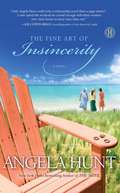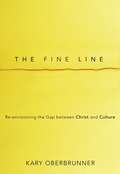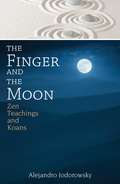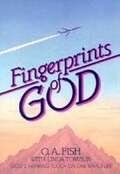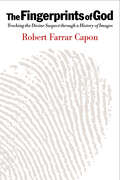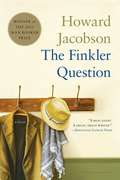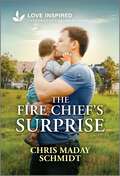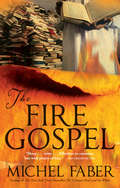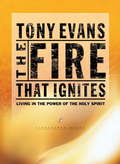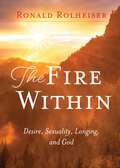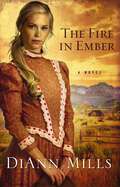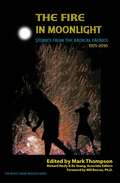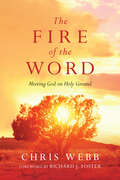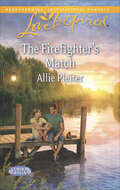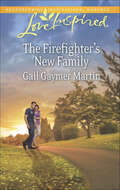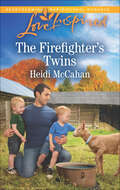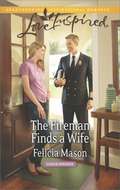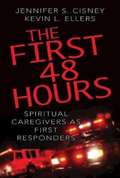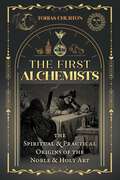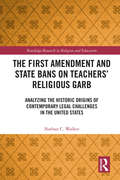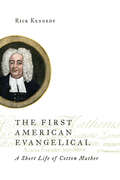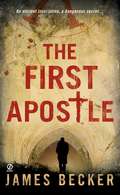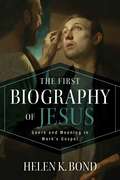- Table View
- List View
The Fine Art of Insincerity
by Angela HuntThree sisters with 10 marriages among them close out their 7-times wed grandma's beach house and wonder if they've inherited her non-commitment gene.
The Fine Art of Insincerity: A Novel
by Angela HuntBestselling author Angela Elwell Hunt returns to the genre--contemporary women's fiction--that has brought her some of her greatest success with this novel about three sisters who have struggled with being committed in their marriages.Three grown Southern sisters have ten marriages between them--and more loom on the horizon--when Ginger, the eldest, wonders if she's the only one who hasn't inherited what their family calls "the Grandma Gene": the tendency to like the casualness of courtship better than the intimacy of marriage. Could it be that her two sisters are fated to serially marry, just like their seven-times wed grandmother, Mrs. Lillian Irene Harper Winslow Goldstein Carey James Bobrinski Gordon George? It takes a "girls only" weekend, closing up Grandma's treasured beach house for the last time, for the sisters to really unpack their family baggage, examine their relationship DNA, and discover the true legacy their much-marrying grandmother left behind...
The Fine Line: Re-envisioning the Gap between Christ and Culture
by Kary OberbrunnerWhat Does It Mean to Be in the World but Not of It? The Answer May Surprise You. Christ-followers are supposed to be the most liberated people ever to walk the face of the earth—with a message powerful enough to cause the dead to rise and the blind to see. We’re supposed to have God living inside of us. We’re supposed to know how to be in the world but not of it. Does that describe your life? Author Kary Oberbrunner suspects the answer is no, but not because you aren’t passionate about Christ. Rather, it’s because the church has been ripped apart and reassembled into two main camps that, at best, casually tolerate each other. The first camp separates itself from people, society, and culture for the main purpose of remaining unstained by the world. While the second camp conforms itself to the ideals, philosophies, and goals of the world in an attempt to be all things to all people. So what’s the alternative? A growing number of people believe in a different way and a different world. They are transformists. And they have the power to change the world. Care to join them?
The Finger and the Moon: Zen Teachings and Koans
by Alejandro JodorowskyJodo’s interpretations of the stories and koans of Zen master Ejo Takata • Offers more than 60 Zen teaching tales, initiatory stories, koans, and haikus for self-realization and spiritual awakening • Each story or koan is accompanied by the author’s lucid and penetrating commentary, blending the same burlesque slapstick and sublime insight that characterize his films • Explains how one must see beyond the words of the story to grasp the spiritual insights they contain Before he became the film maker and graphic novel author known throughout the world today, Alejandro Jodorowsky studied with Zen master Ejo Takata in Mexico City. In The Finger and the Moon, Jodorowsky recounts how he became Takata’s student and offers his interpretations of the teaching tales, initiatory stories, koans, and enigmatic haikus he learned at the feet of his great and humble teacher. Blending the same burlesque slapstick and sublime insight that characterize his films such as El Topo and The Holy Mountain, each story is accompanied by the author’s lucid and penetrating commentary, as well as insights from ancient Zen teachers. Yet their most significant gift to the reader is the sudden shock of realization they impart that can lead to spiritual awakening. Jodorowsky notes that most people are incapable of self-realization because of their fear of the void within, an emptiness they seek to fill with noise and chatter. He shows that Zen teachings can be compared to a finger pointing at the moon, directing you to awaken to your true nature--the Buddha within. The danger lies in mistaking the pointing finger for the moon, mistaking the words for the essential enlightenment, which can only be grasped once words have been surpassed. Unlike most tales, these stories are intended to evoke silent illumination--as true awakening and self-realization cannot occur until the mind has been stilled.
The Fingerprints of God
by O. A. Fish Linda TomblinExciting, true-life stories that make readers more aware of how God moves extraordinarily in ordinary lives.
The Fingerprints of God: Tracking the Divine Suspect through a History of Images
by Robert Farrar CaponThis is a print on demand book and is therefore non- returnable.
The Finkler Question
by Howard JacobsonJulian Treslove, a professionally unspectacular former BBC radio producer, and Sam Finkler, a popular Jewish philosopher, writer, and television personality, are old school friends. Despite a prickly relationship and very different lives, they've never lost touch with each other, or with their former teacher, Libor Sevcik.<P><P> Dining together one night at Sevcik's apartment—the two Jewish widowers and the unmarried Gentile, Treslove—the men share a sweetly painful evening, reminiscing on a time before they had loved and lost, before they had prized anything greatly enough to fear the loss of it. But as Treslove makes his way home, he is attacked and mugged outside a violin dealer's window. Treslove is convinced the crime was a misdirected act of anti-Semitism, and in its aftermath, his whole sense of self will ineluctably change.<P> The Finkler Question is a funny, furious, unflinching novel of friendship and loss, exclusion and belonging, and the wisdom and humanity of maturity.<P> Winner of the 2010 Man Booker Prize.
The Fire Chief's Surprise: An Uplifting Inspirational Romance
by Chris Maday SchmidtHe wasn&’t looking for love… Until one little boy came into his life. Fire chief Josh Rogers has just three months to get married or risk losing custody of his late foster brother&’s infant son. So when Annie Greene offers to help him find a wife in exchange for repairs at her bakery, it seems like the perfect solution. As the three spend time together, Josh can&’t help but feel that Annie&’s the only person he can picture filling the role of Finn&’s mother. But can they set aside their past insecurities and embrace a chance at happily-ever-after?From Love Inspired: Uplifting stories of faith, forgiveness and hope.
The Fire Gospel (Books That Changed the World #9)
by Michel FaberFrom the bestselling author of The Crimson Petal and the White, “a satire of the modern entertainment industry . . . hilariously entertaining” (The Sunday Telegraph).Michel Faber’s The Fire Gospel is a wickedly funny, acid-tongued, media-savvy picaresque that delves into our sensationalist culture. Theo Griepenkerl, a Canadian linguistics scholar, is sent to Iraq in search of artifacts that have survived the destruction and looting of the war. While visiting a museum in Mosul, he finds nine papyrus scrolls tucked in the belly of a bas-relief sculpture: they have been perfectly preserved for more than two thousand years. After smuggling them out of Iraq and translating them from Aramaic, Theo realizes the extent of his career-making find, for he is in possession of the Fifth Gospel, and it offers a shocking and incomparable eyewitness account of Christ’s crucifixion and last days on Earth. A hugely entertaining, and by turns shocking story, The Fire Gospel is a smart, stylish, and suspenseful novel.“Most insightful when describing fatuous superficiality . . . The Fire Gospel coasts cleverly and blithely.”—The New York Times“The satire is so entertaining, the pace so sharp, the writing so witty . . . The Fire Gospel can be read easily in one sitting. It’s effortless to consume, but with plenty of bite.”—The Observer“A fun and tender retelling of the Prometheus myth . . . there’s a tenderness about humankind and our inarticulate, profound need to believe that shines through Faber’s tale.”—The Plain Dealer“Faber writes with humor, intelligence, and a keen eye for our modern culture. Readers will laugh at the book and maybe a little at themselves.”—Booklist
The Fire That Ignites: Living in the Power of the Holy Spirit (LifeChange Books)
by Tony EvansTony Evans leads readers on a journey through the eyes of the disciples, revealing how God's gift of the Holy Spirit turned them from quivering cowards into bold martyrs who built His church and changed the world. In the same way, the unchanging power of the Spirit can ignite a fire in readers' lives today -- transforming them from sleepwalkers into wide-awake witnesses for Him. Dr. Evans shows how the power of the Spirit brings wisdom, freedom, and joy to the Christian -- as well as glory to God's kingdom -- and how holy habits can keep readers plugged in to the eternal source of spiritual power. Jesus said, "You will receivepowerwhen the Holy Spirit has come upon you. " What kind of difference is the Holy Spirit of God making in your daily life? You've probably heard confusing, often conflicting information about who the Spirit is and what He does. You may feel disconnected from Him, even as you long to experience His dynamic presence and power. Here is the practical help you've been looking for. With clear, simple teaching straight from the Word of God, Tony Evans shows you how to intimately know the Holy Spirit-His fruit, His power, His guidance-for a life of victory and joy. From the Hardcover edition.
The Fire Within: Desire, Sexuality, Longing, and God
by Ronald RolheiserFor most religious people, the words God and sex never go together. God is conceived of as holy, pure, sexless, and as morally above the raw desires that so powerfully beset us. Sex, on the other hand, is conceived of as earthy and unholy, something we must snatch, and not without guilt, from the gods. Christianity has struggled mightily with sex; so too have most other religions. And yet when we look at sexual desire and ask where it comes from, there can be only one answer. It comes from God. This is a book on desire, its experience, its origins, its meaning, and how it might be generatively channeled. Sexuality is inside us to help lure us back to God, but dealing with this fire inside us is a lifelong struggle. Ron Rolheiser sheds light on this mystery and the journey it takes us on in these tantalizing fragments that help give us permission to feel what we feel and know that God is still smiling on us.
The Fire in Ember: A Novel
by Diann MillsJohn Timmons’ life is planned and orderly. He cares for his mother and four younger brothers, and their future depends on him to keep their Colorado ranch profitable. Ember Farrar (Bert) has run away from her lawbreaking family in search of a new life. But, when she attempts to return a horse that her brother had stolen, ranch hands believe she is a thief and a boy and they plan to hang her. John, who is also a deputy marshal, breaks up the hanging. After paying for the stolen horse, he takes the boy home to work off the debt. Later he learns Bert is a girl who refuses to tell him who she is and why she possessed a stolen horse. When ranchers report stolen cattle, Bert is a natural suspect. John is touched by Bert’s sweet spirit and natural gift of music. Surely she’s not a cattle thief. Bert fears for their lives when she is forced to either help her brothers steal or put the Timmons in danger. When John thinks Bert has betrayed him, he ignores God and turns revengeful. Will John learn who Bert truly is? Will their lives ever return back to normal?
The Fire in Moonlight: Stories from the Radical Faeries 1975-2010
by Mark Thompson Bo Young Richard NeelyAn anthology of essays by gay men who identify as Radical Faeries talking about the history of the movement and the personal influence it has had in their lives.
The Fire of the Word: Meeting God on Holy Ground (Renovare Resources Ser.)
by Chris WebbThe Bible has the astounding power to transform lives. The stories of people like Francis of Assisi, Antony of Egypt, Augustine of Hippo, Martin Luther and Martin Luther King Jr. vividly demonstrate this. Why aren't more of us transformed by Scripture today? Too often we study biblical texts without believing that God truly inhabits this book. Scripture seeks to capture our minds, not merely educate them. In these pages Chris Webb explains that we can transform our Christian life by reading as lovers rather than as theorists. This is possible by coming to the text prayerfully, expectantly, in humility and empty-handed. When we open the Bible, it does not say to us, "Listen: God is there!" Instead, the voice of the Spirit whispers through each line, "Look: I am here." Reading the Bible this way can reconfigure the habits of your heart, refresh your imagination and memory, reshape and redeem your emotions, realign your reality individually and communally for kingdom life, and take us beyond the Bible into a renewed way of life. Here is the work of today—which is also the work of the whole of life—to open your heart afresh to the living Word of God.
The Firebird Trilogy
by Kathy TyersWhat if God had waited a few thousand years longer to send His Son as Savior? By setting this trilogy of God's love and redemption in a place unfamiliar to us, Kathy Tyers will help you see all the drama and intensity of God's love in a new way. Firebird is a brilliant military officer who is captured by an enemy planet. She accepts their God--but can she come to believe that He will send His Son to shed His blood to pay for the sins of the people? Does life have real meaning without God? In Fusion Fire, Firebird struggles to save herself, her husband--and the lives of her two unborn sons. Can her new-found faith give her the strength to do what she knows she must do? Crown of Fire is the dazzling finale of the Firebird Trilogy. Firebird returns to her home planet to avert a civil war. Will she have the wisdom to serve her new God and bring peace-- or will her pride destroy everything shejoyes?
The Firefighter's Match (Gordon Falls #3)
by Allie PleiterA Healing Match After serving overseas, former soldier Josephine "JJ" Jones needs a fresh start. And Gordon Falls is just the place. When JJ meets executive Alex Cushman, her world is turned upside down. Alex is seeking a respite from all the pressures of his multimillion-dollar business. And the beautiful firefighter might be the answer to his prayers. But a secret lies between them. One so big, it threatens to end their love before it's even begun. Can she ever trust Alex when she finds out he may be responsible for a family tragedy that changed all their lives? Gordon Falls: Hearts ablaze in a small town
The Firefighter's New Family
by Gail Gaymer MartinLove To The Rescue A tornado may have left Ashley Kern injured beneath a fallen tree, but it's her rescuer who plays havoc with her emotions. Firefighter Devon Murphy is everything the single mom could wish for in a husband: handsome, a doting father and ready to join his family to hers. But how can the pretty war widow make a life once more with a man whose career is full of danger? Devon has fought some pretty big battles in his life, but can he help Ashley conquer her fears and show her the safest place of all is in his arms?
The Firefighter's Twins
by Heidi McCahanOne single dad plus twin toddlers A formula for her new family? Since his wife left, fireman Shay Campbell has focused on work and his twin toddlers. But the lovely Natalie McDowell is making him rethink that decision. She’s great with his boys, and they adore her. But he can’t go through losing someone again. Will a dream job offer win Natalie’s heart, or does it belong to Shay and the twins? From Love Inspired: Uplifting stories of faith, forgiveness and hope. Discover Heidi McCahan's Home to Hearts Bay miniseries: Book 1: An Alaskan Secret Book 2: The Twins' Alaskan Adventure Book 3: His Alaskan Redemption
The Fireman Finds a Wife
by Felicia MasonHer Unexpected Hero Widow Summer Spencer is eager for a quiet life-without the worry of loving a man who lives life in the fast lane. But when fire chief Cameron Jackson starts to woo her, it's tough to resist his charms. Chief Cam can't ignore the sparks between him and the stately beauty. But when he learns she's from the richest family in town, he's not sure he can ever measure up to her expectations. Can he set aside his fears and give true love another chance?
The First 48 Hours: Spiritual Caregivers as First Responders
by Jennifer S. Cisney Kevin L. EllersThe first 48 hours are critical to the recovery of trauma victims.First responders make the difference between life and death for trauma victims. But what is often not recognized is that when disaster strikes, spiritual caregivers are often among those first on the scene. For these caregivers response should also help propel survivors toward positive transformation. This book focuses on critical responses that are key in the aftermath of natural disaster, community violence, personal injury, and crime. These basics include: the power of presence, safety, assessment and triage, how we help, putting the pieces together, telling the story, hope, and caring in the long haul.
The First Alchemists: The Spiritual and Practical Origins of the Noble and Holy Art
by Tobias ChurtonExplores the origins and practices of early alchemy• Examines the oldest surviving alchemical texts, the original purpose of the &“Royal Art,&” and the first alchemists, showing how women dominated early alchemy• Looks at the historical setting for the first alchemists, with detailed accounts of their apparatus, recipes, chemical processes, and the ingredients they used• Reveals how changing the color of materials was more important in early alchemy than transmuting base metals into goldInvestigating the origins of alchemy and the legend of the Philosopher&’s Stone, Tobias Churton explores the oldest surviving alchemical texts, the original purpose of the &“Royal Art,&” and the first alchemists themselves. He reveals the theories and philosophies behind the art and how early apparatus and methods were employed by alchemists through the ages.Showing how women dominated early alchemy, Churton looks at the first known alchemist, the Jewess Maria the Prophetess, inventor of the bain marie, still in use worldwide today. He also looks at early alchemist Cleopatra (not the well-known Egyptian queen) and 3rd–4th century Egyptian female artisan Theosebeia, who had a guild of adepts working under her. He examines in depth the work of Zosimos of Panopolis and shows how Zosimos&’s historic work inspired the medieval view of alchemy as an initiatory path whose stages follow the transmutation of base metals into gold.Exploring the latest research on early practices in Upper Egypt, the author discusses the political and industrial realities facing the first alchemists. He examines the late antique &“Stockholm&” and &“Leiden&” papyri, which offer detailed knowledge of the first known Greco-Egyptian chemical recipes for gold and silver dyes for metal and stone, and purple dyes for wool. He emphasizes how changing color in early alchemy was misinterpreted to imply transmutation of one metal into another. He reveals how the alchemical secrets for working with the &“living statues&” of the Egyptian temples was jealously guarded by the priesthood and how secrecy helped to reinforce beliefs that alchemical knowledge came from forbidden, celestial sources. He also investigates the mysterious relation between alchemy, spiritual gnosis, Hermeticism, and the Book of Enoch.Revealing the hidden legacy of the early alchemists, Churton shows how their secret workings provided a transmission line for ancient heretical doctrines to survive into the Renaissance and beyond.
The First Amendment and State Bans on Teachers' Religious Garb: Analyzing the Historic Origins of Contemporary Legal Challenges in the United States (Routledge Research in Religion and Education)
by Nathan C. WalkerExamining the twelve-decade legal conflict of government bans on religious garb worn by teachers in U.S. public schools, this book provides comprehensive documentation and analysis of the historical origins and subsequent development of teachers’ religious garb in relation to contemporary legal challenges within the United Nations and the European Union. By identifying and correcting factual errors in the literature about historical bans on teachers’ garb, Walker demonstrates that there are still substantial and unresolved legal questions to the constitutionality of state garb statutes and reflects on how the contemporary conflicts are historically rooted. Showcased through a wealth of laws and case studies, this book is divided into eight clear and concise chapters and answers questions such as: what are anti-religious-garb laws?; how have the state and federal court decisions evolved?; what are the constitutional standards?; what are the establishment clause and free exercise clause arguments?; and how has this impacted current debates on teachers’ religious garb?, before concluding with an informative summary of the points discussed throughout. The First Amendment and State Bans on Teachers’ Religious Garb is the ideal resource for researchers, academics, and postgraduate students in the fields of education, religion, education policy, sociology of education, and law, or those looking to explore an in-depth development of the laws and debates surrounding teachers’ religious garb within the last 125 years.
The First American Evangelical: A Short Life of Cotton Mather (Library of Religious Biography (LRB))
by Rick KennedyCotton Mather (1663-1728) was America's most famous pastor and scholar at the beginning of the eighteenth century. People today generally associate him with the infamous Salem witch trials, but in this new biography Rick Kennedy tells a bigger story: Mather, he says, was the very first American evangelical.A fresh retelling of Cotton Mather's life, this biography corrects misconceptions and focuses on how he sought to promote, socially and intellectually, a biblical lifestyle. As older Puritan hopes in New England were giving way to a broader and shallower Protestantism, Mather led a populist, Bible-oriented movement that embraced the new century -- the beginning of a dynamic evangelical tradition that eventually became a major force in American culture.Incorporating the latest scholarly research but written for a popular audience, The First American Evangelical brings Cotton Mather and his world to life in a way that helps readers understand both the Puritanism in which he grew up and the evangelicalism he pioneered.Watch a 2015 interview with the author of this book here:
The First Apostle
by James BeckerHIC VANIDICI LATITANT. "Here lie the liars." A mysterious inscription found on a slab of stone points to the darkest of secrets hidden for centuries by the Vatican--a secret for which countless innocent lives will be sacrificed. Police detective Chris Bronson is devastated when he learns that his best friend's wife--the woman he secretly loves--has died in a fall at her home. But when Bronson heads to Italy to console his friend, he finds evidence of a break-in and a strange Latin inscription on a stone above the fireplace. All his police instincts tell him that the death was no accident. To decipher the stone, Bronson enlists the help of his ex-wife, an antiques specialist. Her expertise leads them on a hunt across Europe that brings them to a truth so dangerous it could destroy the very foundations of the Christian faith.
The First Biography of Jesus: Genre and Meaning in Mark's Gospel
by Helen K. BondWhat difference does it make to identify Mark's gospel as an ancient biography?Reading the gospels as ancient biographies makes a profound difference to the way that we interpret them. Biography immortalizes the memory of the subject, creating a literary monument to the person&’s life and teaching. Yet it is also a bid to legitimize a specific view of that figure and to position an author and his audience as appropriate &“gatekeepers&” of that memory. Biography was well suited to the articulation of shared values and commitments, the formation of group identity, and the binding together of a past story, present concerns, and future hopes. Helen Bond argues that Mark&’s author used the genre of biography to extend the gospel from an earlier narrow focus on the death and resurrection of Jesus so that it included the way of life of its founding figure. Situating Jesus at the heart of a biography was a bold step in outlining a radical form of Christian discipleship patterned on the life – and death – of Jesus.
